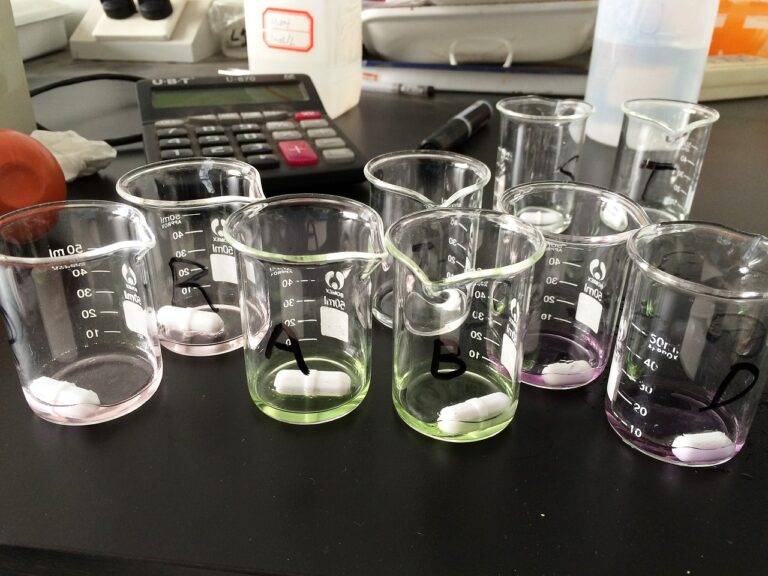Exploring the Potential of Nanotechnology in Cancer Treatment
Nanotechnology has revolutionized the field of cancer treatment by offering innovative solutions to combat this complex disease. By utilizing nanoparticles, scientists can precisely target cancer cells while minimizing damage to healthy tissues. These tiny particles can be engineered to deliver chemotherapy drugs directly to the tumor site, increasing the effectiveness of treatment and reducing harmful side effects on the body.
One key concept in nanotechnology is the ability to enhance imaging techniques for early detection and precise monitoring of tumor progression. Nanoparticles can be designed to interact with specific molecules or markers present in cancer cells, providing clinicians with real-time feedback on the effectiveness of treatment. This personalized approach allows for tailored therapies that can adapt to the changing characteristics of the tumor, ultimately improving patient outcomes in the fight against cancer.
Understanding Nanoparticles and Their Role in Targeted Therapy
Nanoparticles are tiny particles with diameters ranging from 1 to 100 nanometers. Due to their small size, nanoparticles have unique physical and chemical properties that make them ideal for targeted therapy in cancer treatment. These properties allow nanoparticles to evade clearance mechanisms in the body and selectively accumulate in tumor tissues, minimizing damage to healthy cells.
In targeted therapy, nanoparticles can be engineered to deliver drugs directly to cancer cells, increasing the effectiveness of treatment while reducing side effects. By attaching targeting ligands to the surface of nanoparticles, researchers can ensure that the drug payload is delivered specifically to cancer cells, maximizing therapeutic outcomes. Nanoparticles also offer the ability to encapsulate multiple drugs or therapeutic agents, allowing for combination therapies that can overcome drug resistance and improve patient outcomes.
• Nanoparticles have diameters ranging from 1 to 100 nanometers
• Unique physical and chemical properties make nanoparticles ideal for targeted therapy in cancer treatment
• Nanoparticles can evade clearance mechanisms in the body and selectively accumulate in tumor tissues
• Targeted therapy using nanoparticles delivers drugs directly to cancer cells, increasing effectiveness while reducing side effects
• Attaching targeting ligands to nanoparticles ensures drug payload is delivered specifically to cancer cells
• Encapsulating multiple drugs or therapeutic agents in nanoparticles allows for combination therapies that overcome drug resistance
The Promise of Nanotechnology in Delivering Chemotherapy Drugs
Chemotherapy has long been a cornerstone in the treatment of cancer, but its effectiveness can be limited by its indiscriminate attack on healthy cells along with cancerous ones. Nanotechnology offers a promising solution to this problem by delivering chemotherapy drugs directly to cancer cells while sparing healthy tissues. This targeted approach not only enhances the drug’s efficacy but also minimizes the side effects often associated with traditional chemotherapy.
Nanoparticles, with their unique properties and ability to be engineered for specific purposes, play a crucial role in delivering chemotherapy drugs effectively. By encapsulating the drugs within nanoparticles, researchers can control their release and accumulation at the tumor site, maximizing the treatment’s impact on cancer cells. Additionally, the small size of nanoparticles enables them to penetrate deep into tissues and navigate through biological barriers that would otherwise hinder the drug delivery process. This precise targeting made possible by nanotechnology holds great promise for improving cancer treatment outcomes and patient quality of life.
What are the key concepts in nanotechnology and cancer treatment?
Nanotechnology involves manipulating materials at the nanoscale level, typically using particles ranging from 1 to 100 nanometers in size. In cancer treatment, nanoparticles can be designed to specifically target cancer cells, delivering chemotherapy drugs directly to the tumor site while minimizing damage to healthy cells.
How do nanoparticles play a role in targeted therapy?
Nanoparticles can be functionalized with targeting ligands that recognize and bind to specific receptors on cancer cells. This allows for precise delivery of chemotherapy drugs to the tumor site, increasing their effectiveness and reducing side effects.
What is the promise of nanotechnology in delivering chemotherapy drugs?
Nanotechnology holds the potential to revolutionize cancer treatment by improving the efficacy and safety of chemotherapy drugs. By using nanoparticles to deliver these drugs directly to cancer cells, researchers aim to enhance treatment outcomes and minimize the negative impact on healthy tissues.





